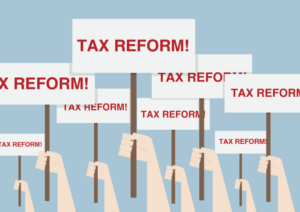Tax Rate Guide for 2013 and 2014

Tax Rate Guide for 2013 and 2014
Standard Mileage Rates
Corporate Tax Rate Schedule
Individual Tax Rate Schedules
Standard Deductions/Personal Exemptions
Capital Gains and Dividends Taxed as Net Capital Gain
AMT Tax Brackets
Tax Rate Schedules for Estates and Trusts
Applicable Exclusion Amount for Estate Tax
Lifetime Exclusion Amount for Gift Tax
Gift Tax Annual Exclusion
Estate and Gift Tax Rates for Decedents Dying in 2012/2013
ERISA and Tax Code Pension and Retirement Plan Limits
Standard Mileage Rates
| 2014 | 2013 | |
| Business | 56.0 cents per mile | 56.5 cents per mile |
| Charitable | 14 cents per mile | 14 cents per mile |
| Medical and Moving | 23.5 cents per mile | 24 cents per mile |
Corporate Tax Rate Schedule
| If Taxable Income Is | The Tax Is: | ||
| Not over $50,000 | 15% of the taxable income | ||
| Over $50,000 | but not over $75,000 | $7,500 plus | 25% of the amount over $50,000 |
| Over $75,000 | but not over $100,000 | $13,750 plus | 34% of the amount over $75,000 |
| Over $100,000 | but not over $335,000 | $22,250 plus | 39% of the amount over $100,000 |
| Over $335,000 | but not over $10,000,000 | $113,900 plus | 34% of the amount over $335,000 |
| Over $10,000,000 | but not over $15,000,000 | $3,400,000 plus | 35% of the amount over $10,000,000 |
| Over $15,000,000 | but not over $18,333,333 | $5,150,000 plus | 38% of the amount over $15,000,000 |
| Over 18,333,333 | 35% of the taxable income | ||
| Qualified personal service corporations are taxed at a flat rate of 35% of taxable income | |||
Individual Tax Rate Schedules
2014
2014 Unmarried Individuals (Other than Surviving Spouses and Heads of Households)
| If Taxable Income Is: | The Tax Is: | ||
| Not over $9,075 | 10% of the taxable income | ||
| Over $9,075 | but not over $36,900 | $907.50 plus | 15% of the excess over $9,075 |
| Over $36,900 | but not over $89,350 | $5,081.25 plus | 25% of the excess over $36,900 |
| Over $89,350 | but not over $186,350 | $18,193.75 plus | 28% of the excess over $89,350 |
| Over $186,350 | but not over $405,100 | $45,353.75 plus | 33% of the excess over $186,350 |
| Over $405,100 | $117,541.25 plus | 35% of the excess over $405,100 | |
2014 Married Individuals Filing Joint Returns and Surviving Spouses
| If Taxable Income Is: | The Tax Is: | ||
| Not over $18,150 | 10% of the taxable income | ||
| Over $18,150 | but not over $73,800 | $1,815.00 plus | 15% of the excess over $18,150 |
| Over $73,800 | but not over $148,850 | $10,162.50 plus | 25% of the excess over $73,800 |
| Over $148,850 | but not over $226,850 | $28,925.00 plus | 28% of the excess over $148,850 |
| Over $226,850 | but not over $405,100 | $50,765.00 plus | 33% of the excess over $226,850 |
| Over $405,100 | $109,587 plus | 35% of the excess over $457,600 | |
2014 Married Individuals Filing Separate Returns
| If Taxable Income Is: | The Tax Is: | ||
| Not over $9,075 | 10% of the taxable income | ||
| Over $9,075 | but not over $36,900 | $907.50 plus | 15% of the excess over $9,075 |
| Over $36,900 | but not over $74,425 | $5,081.25 plus | 25% of the excess over $36,900 |
| Over $74,425 | but not over $113,425 | $14,462.50 plus | 28% of the excess over $74,425 |
| Over $113,425 | but not over $202,550 | $25,382.50 plus | 33% of the excess over $113,425 |
| Over $202,550 | $54,793.75 plus | 35% of the excess over $202,550 | |
| Over $228,800 | $63,981.25 plus | 39.6% of the excess over $228,800 | |
2014 Heads of Households
| If Taxable Income Is: | The Tax Is: | ||
| Not over $12,950 | 10% of the taxable income | ||
| Over $12,950 | but not over $49,400 | $1,295 plus | 15% of the excess over $12,950 |
| Over $49,400 | but not over $127,550 | $6,762.50 plus | 25% of the excess over $49,400 |
| Over $127,550 | but not over $206,600 | $26,300 plus | 28% of the excess over $127,550 |
| Over $206,600 | but not over $405,100 | $48,434 plus | 33% of the excess over $206,600 |
| Over $405,100 | but not over $432,200 | $113,939 plus | 35% of the excess over $405,100 |
| Over $432,200 | $123,424 plus | 35% of the excess over $432,200 | |
2013
2013 Unmarried Individuals (Other than Surviving Spouses and Heads of Households)
| If Taxable Income Is: | The Tax Is: | ||
| Not over $8,925 | 10% of the taxable income | ||
| Over $8,925 | but not over $36,250 | $892.50 plus | 15% of the excess over $8,925 |
| Over $36,250 | but not over $87,850 | $4,991.25 plus | 25% of the excess over $36,250 |
| Over $87,850 | but not over $183,250 | $17,891.25 plus | 28% of the excess over $87,850 |
| Over $183,250 | but not over $398,350 | $44,903.25 plus | 33% of the excess over $183,250 |
| Over $398,350 | but not over $400,000 | $115,586.25 plus | 35% of the excess over $398,350 |
| Over $400,000 | $116,163.75 plus | 39.6% of the excess over $400,000 | |
2013 Married Individuals Filing Joint Returns and Surviving Spouses
| If Taxable Income Is: | The Tax Is: | ||
| Not over $17,850 | 10% of the taxable income | ||
| Over $17,850 | but not over $72,500 | $1,785 plus | 15% of the excess over $17,850 |
| Over $72,500 | but not over $146,400 | $9,982.50 plus | 25% of the excess over $72,500 |
| Over $146,400 | but not over $223,050 | $28,457.50 plus | 28% of the excess over $146,400 |
| Over $223,050 | but not over $398,350 | $49,919.50 plus | 33% of the excess over $223,050 |
| Over $398,350 | but not over $450,000 | $107,768.50 plus | 35% of the excess over $398,350 |
| Over $450,000 | $125,846 plus | 39.6% of the excess over $450,000 | |
2013 Married Individuals Filing Separate Returns
| If Taxable Income Is: | The Tax Is: | ||
| Not over $8,925 | 10% of the taxable income | ||
| Over $8,925 | but not over $36,250 | $892.50 plus | 15% of the excess over $8,925 |
| Over $36,250 | but not over $73,200 | $4,991.25 plus | 25% of the excess over $36,250 |
| Over $73,200 | but not over $111,525 | $14,228.75 plus | 28% of the excess over $73,200 |
| Over $111,525 | but not over $199,175 | $24,959.75 plus | 33% of the excess over $111,525 |
| Over $199,175 | but not over $225,000 | $53,884.25 plus | 35% of the excess over $199,175 |
| Over $225,000 | $62,923 plus | 39.6% of the excess over $225,000 | |
2013 Heads of Households
| If Taxable Income Is: | The Tax Is: | ||
| Not over $12,750 | 10% of the taxable income | ||
| Over $12,750 | but not over $48,600 | $1,275 plus | 15% of the excess over $12,750 |
| Over $48,600 | but not over $125,450 | $6,652.50 plus | 25% of the excess over $48,600 |
| Over $125,450 | but not over $203,150 | $25,865 plus | 28% of the excess over $125,450 |
| Over $203,150 | but not over $398,350 | $47,621 plus | 33% of the excess over $203,150 |
| Over $398,350 | but not over $425,000 | $112,037 plus | 35% of the excess over $398,350 |
| Over $425,000 | $121,364.50 plus | 39.6% of the excess over $425,000 | |
Standard Deductions/Personal Exemptions
Standard Deduction Tables
| 2014 | 2013 | |
| Married Filing Jointly and Surviving Spouses | $12,400 | $12,200 |
| Heads of Households | $9,100 | $8,950 |
| Single | $6,200 | $6,100 |
| Married Filing Separate | $6,200 | $6,100 |
| Additional Amount for Aged and Blind, Married and Surviving Spouses | $1,200 for each | $1,200 for each |
| Additional Amount for Aged and Blind, Singles and Heads of Household | $1,550 for each | $1,500 for each |
Personal Exemptions and Phaseout Amounts
| 2014 | 2013 | |||
| Personal Exemption Amount | $3,950 | $3,900 | ||
| Before January 1, 2010, code section 151(d)(3) phaseout of the tax benefit of the personal exemptions is calculated by reducing the total amount of the personal exemptions by 2% for each $2,500 increment (or portion thereof) of adjusted gross income in excess of a threshold phaseout amount adjusted for inflation.
The personal exemption phaseout is repealed for 2010. The repeal is extended until 2012. Beginning in 2013, the exemption is subject to a phase-out that begins with adjusted gross incomes of $250,000 ($300,000 for married couples filing jointly). It phases out completely at $372,500 ($422,500 for married couples filing jointly.) |
||||
Capital Gains and Dividends Taxed as Net Capital Gain
Capital Gains
| 2005-12 | 2013-14 | |
| Rate for Non-corporate Taxpayers above 15% income tax bracket |
15% | 15% |
| Capital gains rate for MFJ earning over $450,000 and for filing single earning over $400,000 | 15% | 20% |
| 2005-07 | 2008-14 | |
| Rate for Non-corporate Taxpayers in 10% or 15% tax bracket |
5% | 0% |
Qualified Dividends Taxed as Net Capital Gain
| 2005-12 | 2013-14 | |
| Rate for Non-corporate Taxpayers above 15% income tax bracket | 15% | 15% |
| Rate for Non-corporate Taxpayers with 39.6% income tax bracket | 15% | 20% |
| Rate for Non-corporate Taxpayers in 10% of 15% tax bracket |
0% | 0% |
AMT Tax Brackets
| 2013 AMT Exemptions Amounts: |
| $51,900 for single and head of household filers, |
| $80,800 for married people filing jointly and for qualifying widows or widowers, and |
| $40,400 for married people filing separately. |
| AMT Tax Rates: |
| The exemption amounts mean that this amount of AMT taxable income is not subject to the AMT. Income over these amounts may be subject to AMT. Unlike the ordinary tax rates, the AMT has only two tax brackets. The AMT tax rate is assessed only on AMT income over the exemption amount. The AMT tax rates are: |
| 26% on the first $175,000 of AMT taxable income, and |
| 28% on the remainder of AMT taxable income |
Tax Rate Schedules for Estates and Trusts
2014
| If Taxable Income Is: | The Tax Is: | ||
| Not over $2,450 | 15% of the taxable income | ||
| Over $2,450 | but not over $5,700 | $367.50 plus | 25% of the excess over $2,450 |
| Over $5,700 | but not over $8,750 | $1,180 plus | 28% of the excess over $5,700 |
| Over $8,750 | but not over $11,950 | $2,034 plus | 33% of the excess over $8,750 |
| Over $11,950 | $3,090.00 plus | 39.6% of the excess over $12,150 | |
2013
| If Taxable Income Is: | The Tax Is: | ||
| Not over $2,450 | 15% of the taxable income | ||
| Over $2,450 | but not over $5,700 | $367.50 plus | 25% of the excess over $2,450 |
| Over $5,700 | but not over $8,750 | $1,180 plus | 28% of the excess over $5,700 |
| Over $8,750 | but not over $11,950 | $2,034 plus | 33% of the excess over $8,750 |
| Over $11,950 | $3,090 plus | 39.65% of the excess over $11,950 | |
Applicable Exclusion Amount for Estate Tax
| Year of Transfer | Applicable Exclusion Amount |
| 2012 | $13,000 |
| 2013 | $14,000 |
| 2014 | $14,000 |
Lifetime Exclusion Amount for Gift Tax
| Year of Transfer | Applicable Exclusion Amount |
| 2014 | $5,340,000 |
| 2013 | $5,250,000 |
Gift Tax Annual Exclusion
| Year of Transfer | Applicable Exclusion Amount |
| 2002-2005 | $11,000 |
| 2006-2008 | $12,000 |
| 2009-2012 | $13,000 |
| 2013 | $14,000 |
| 2014 | $14,000 |
Estate and Gift Tax Rates for Decedents Dying in 2012/2013
| Taxable Amount Over | Taxable Amount Not Over | Tax on Amount in 1st Column | Rate of Tax on Excess Over Amount in 1st Column |
| 2014/2013 | |||
| $0 | $10,000 | $0 | 18% |
| $10,000 | $20,000 | $1,800 | 20% |
| $20,000 | $40,000 | $3,800 | 22% |
| $40,000 | $60,000 | $8,200 | 24% |
| $60,000 | $80,000 | $13,000 | 26% |
| $80,000 | $100,000 | $18,200 | 28% |
| $100,000 | $150,000 | $23,800 | 30% |
| $150,000 | $250,000 | $38,800 | 32% |
| $250,000 | $500,000 | $70,800 | 34% |
| $500,000 | $750,000 | $155,800 | 37% |
| $700,000 | $1,000,000 | $248,300 | 39% |
| $1,000,000 | $345,800 | 40% |
ERISA and Tax Code Pension and Retirement Plan Limits
| 2014 | 2013 | |
| Deferral Limits for Plans | ||
| 401(k) | 17,500 | 17,500 |
| SIMPLE | 12,000 | 12,000 |
| 403(b) | 17,500 | 17,500 |
| 457 | 17,500 | 17,500 |
| Catch-Up Contributions for Participants Age 50 or Older | ||
| 401(k) Plans | 5,500 | 5,500 |
| SIMPLE | 2,500 | 2,500 |
| Qualified Plans – Annual Compensation Limit | 260,000 | 255,000 |
| Defined Benefit Maximum Annual Benefit | 210,000 | 205,000 |
| Defined Contribution – Maximum Annual Addition | 52,000 | 51,000 |
| “Key Employee” in Top-Heavy Plan | 170,000 | 165,000 |
| To Determine Maximum Account Balance in ESOP Subject to 5-Year Distribution Period |
1,050,000 | 1,035,000 |
| “Highly Compensated Employee” Threshold | 115,000 | 115,000 |
| SEP Compensation Threshold for Participation | 550 | 550 |
| Definition of “Control Employee” for Fringe Benefit Valuation | ||
| Regs. 1.61-21(f)(5)(i) | 105,000 | 100,000 |
| Regs. 1.61-21(f)(5)(iii) | 210,000 | 205,000 |
| Social Security Wage Base | 117,000 | 113,700 |
We hope you found this article about “Tax Rate Guide for 2013 and 2014” helpful. If you have questions or need expert tax or family office advice that’s refreshingly objective (we never sell investments), please contact us or visit our Family office page or our website at www.GROCO.com. Unfortunately, we no longer give advice to other tax professionals gratis.
To receive our free newsletter, contact us here.
Subscribe our YouTube Channel for more updates.

Alan Olsen, is the Host of the American Dreams Show and the Managing Partner of GROCO.com. GROCO is a premier family office and tax advisory firm located in the San Francisco Bay area serving clients all over the world.
Alan L. Olsen, CPA, Wikipedia Bio

GROCO.com is a proud sponsor of The American Dreams Show.

The American Dreams show was the brainchild of Alan Olsen, CPA, MBA. It was originally created to fill a specific need; often inexperienced entrepreneurs lacked basic information about raising capital and how to successfully start a business.
Alan sincerely wanted to respond to the many requests from aspiring entrepreneurs asking for the information and introductions they needed. But he had to find a way to help in which his venture capital clients and friends would not mind.
The American Dreams show became the solution, first as a radio show and now with YouTube videos as well. Always respectful of interview guest’s time, he’s able to give access to individuals information and inspiration previously inaccessible to the first-time entrepreneurs who need it most.
They can listen to venture capitalists and successful business people explain first-hand, how they got to where they are, how to start a company, how to overcome challenges, how they see the future evolving, opportunities, work-life balance and so much more..
American Dreams discusses many topics from some of the world’s most successful individuals about their secrets to life’s success. Topics from guest have included:
Creating purpose in life / Building a foundation for their life / Solving problems / Finding fulfillment through philanthropy and service / Becoming self-reliant / Enhancing effective leadership / Balancing family and work…

MyPaths.com (Also sponsored by GROCO) provides free access to content and world-class entrepreneurs, influencers and thought leaders’ personal success stories. To help you find your path in life to true, sustainable success & happiness. It’s mission statement:
In an increasingly complex and difficult world, we hope to help you find your personal path in life and build a strong foundation by learning how others found success and happiness. True and sustainable success and happiness are different for each one of us but possible, often despite significant challenges.
Our mission at MyPaths.com is to provide resources and firsthand accounts of how others found their paths in life, so you can do the same.
Which Taxes Do Taxpayers Hate the Most?
Which Taxes Do Taxpayers Hate the Most? How many different taxes can you think of? Chances are there are too many for the average person to count. While not all taxes are the same, for the most part people don’t enjoy handing over their money to the government for any reason. So, of all the…
Learning to Innovate
Learning to Innovate Despite popular belief, learning to innovate and ideation can be taught in a systematic way. Just as easily, business ideas can be vetted in a systematic way. Rob Ryan took his career into orbit when we discovered a business development model which he calls the sunflower model. He built his company- Ascend…
The Inspiration Behind the One Minute Manager
The Inspiration Behind the One Minute Manager “As John Lennon said, “Life is what happens to you while you’re busy making other plans” I met Spencer Johnson at a cocktail party in San Diego- he was a children’s book writer. I don’t know if you remember the the value tale series, the value of honesty,…
American Taxpayers Are All for Real Tax Reform
Taxes, taxes, taxes. One thing is for sure you can’t run and hide from them. While most Americans pay their taxes, some more begrudgingly than others, most taxpayers wish they could pay less. What’s more, most taxpayers would also love to see some real change in the tax system instead of the constant back-and-forth…




